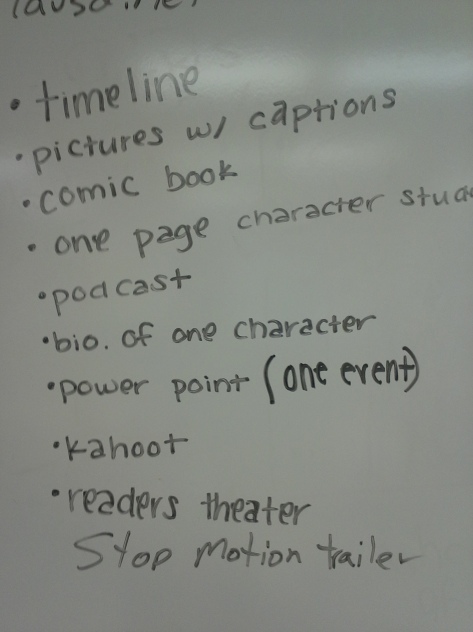Instructional research in writing is not as robust as the body of research that has examined reading.
 Gary A. Trioa contributed a 42 page chapter: Research in Writing Instruction: What We Know and What We Need to Know to the book Shaping Literacy Achievement. Trioa organized contemporary research into four categories: (1) characteristics of struggling writers’ products and processes, (2) essential instructional content and processes, (3) assessment, and (4) teachers’ practices and professional development.
Gary A. Trioa contributed a 42 page chapter: Research in Writing Instruction: What We Know and What We Need to Know to the book Shaping Literacy Achievement. Trioa organized contemporary research into four categories: (1) characteristics of struggling writers’ products and processes, (2) essential instructional content and processes, (3) assessment, and (4) teachers’ practices and professional development.
Juzwik et al. (2005) found writing research has historically been (a) comparably underfunded, (b) mostly descriptive rather than experimental in nature, and (c) typically conducted in post-secondary education settings. Further investment in writing instruction is necessary for the field to flourish and draw the attention it deserves from various stakeholders.
According to the National Center for Education Statistics, 70 percent of teachers indicated they use process instruction to teach composition, yet less than a third of those same teachers spent 90 minutes or more per week teaching writing (1999). Research has shown that 90 minutes per week is a bare minimum when using a process approach to teaching writing (Graves, 1983).
In a number of studies, not all students who are taught a strategy actually use it after treatment (instruction) is discontinued. Changes in writing behaviors and performance can be maintained for a month or so, but mainly disappear after that.
Researchers need to investigate why strategy interventions are not more successful in helping struggling writers. Future studies should examine the effectiveness of combinations of writing strategy instruction and components of strong writing programs. How can writing strategies and increased performance can be maintained over time? What techniques for producing high-quality writing assignments can be generalized across subjects and text types?.
 Planning strategies are rarely examined in conjunction with revision or editing strategies to determine their impact on writing behavior and performance. This should be done both separately and in combination.
Planning strategies are rarely examined in conjunction with revision or editing strategies to determine their impact on writing behavior and performance. This should be done both separately and in combination.
Revising is an essential part of advanced writing instruction and less time needs to be devoted to planning instruction. The relationships between these two aspects of the writing process are highly variable across tasks and deserve more empirical scrutiny.
Embedding strategy training in meaningful writing activities may produce more positive outcomes in the fidelity, maintenance, and transfer of writing skills across subjects. More sophisticated research designs may be beneficial in increasing theoretical advances in this area.
Researchers need to develop integrated writing assessment systems that provide immediate, instructionally relevant data to teachers so that they are better equipped for pinpointing writing problems and responding accordingly. Identifying instructional adaptations that are valid and readily integrated into practice will help teachers maximize the writing potential of all students.
Dr. Trioa’s work suggests that sophisticated, large-scale research into the relationships between the components of writing programs, strategy interventions, and editing/revision processes could reveal new insights for the field. Peer review, automated essay scoring systems, and revision assistants offer students immediate feedback and produce large data sets for analysis. With the emergence of MOOCs, online education, and social media, these studies appear to be less burdensome for researchers to conduct.
Reference
Trioa, G. A., (2007) Research in Writing Instruction: What We Know and What We Need to Know. In M. Pressley, A. Billman, K. Perry, K. Refitt, & J. M. Reynolds (Eds.), Shaping literacy achievement: Research we have, research we need. New York: Guilford Press.










 ng Marie Antoinette: The Journey by Antonia Fraser. Four days per week, we have 30 minutes of sustained silent reading (SSR) where students maintain an
ng Marie Antoinette: The Journey by Antonia Fraser. Four days per week, we have 30 minutes of sustained silent reading (SSR) where students maintain an 






 Planning strategies are rarely examined in conjunction with revision or editing strategies to determine their impact on writing behavior and performance. This should be done both separately and in combination.
Planning strategies are rarely examined in conjunction with revision or editing strategies to determine their impact on writing behavior and performance. This should be done both separately and in combination.

